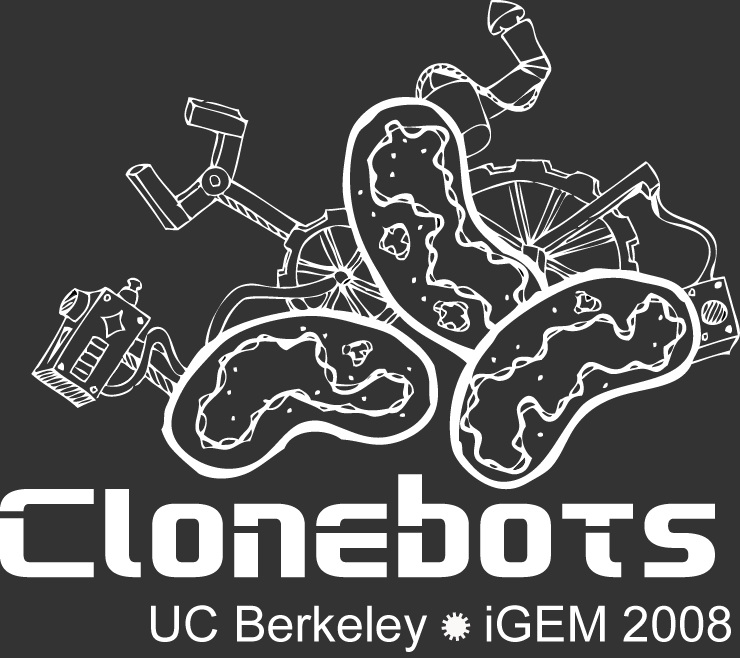Team:UC Berkeley
From 2008.igem.org
(Difference between revisions)
| Line 44: | Line 44: | ||
|[[Team:UC_Berkeley/Calendar|Calendar]] | |[[Team:UC_Berkeley/Calendar|Calendar]] | ||
|} | |} | ||
| - | |valign="top"| '' | + | |valign="top"| ''In an effort to optimize the manufacture of parts, we have designed Clonebots - a collection of devices and strains that aid in the synthesis and analysis of new parts. Our team has programmed Clonebots to perform processes critical for efficient manufacture of biological products. We created systems capable of in vivo genetic manipulations and constructed an inducible self-lysis device designed to reclaim a variety of products without the need for conventional methods of lysis. By replacing traditional mechanical operations with biologically encoded alternatives, Clonebots are capable of accomplishing many operations with a single automated liquid handling unit - a cost-effective, BioCAD-friendly approach to large-scale projects.'' |
|} | |} | ||
<br> | <br> | ||
Revision as of 23:33, 10 October 2008
| In an effort to optimize the manufacture of parts, we have designed Clonebots - a collection of devices and strains that aid in the synthesis and analysis of new parts. Our team has programmed Clonebots to perform processes critical for efficient manufacture of biological products. We created systems capable of in vivo genetic manipulations and constructed an inducible self-lysis device designed to reclaim a variety of products without the need for conventional methods of lysis. By replacing traditional mechanical operations with biologically encoded alternatives, Clonebots are capable of accomplishing many operations with a single automated liquid handling unit - a cost-effective, BioCAD-friendly approach to large-scale projects. |
|
 "
"
